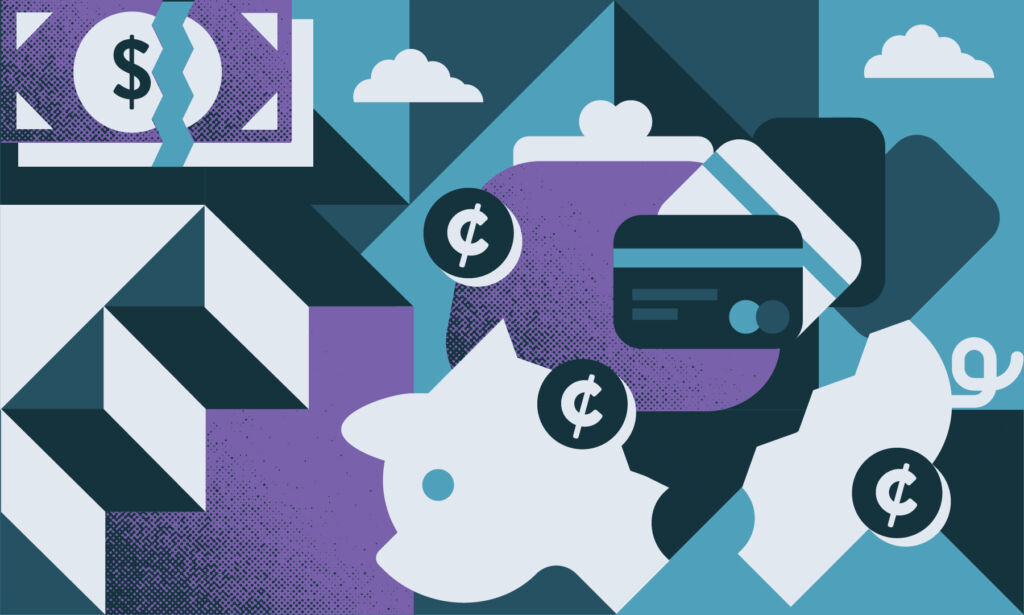Let’s be clear. Today’s high inflation puts the tightest squeeze on low-income households because they have the least ability to absorb or offset rising expenses.
The cost of necessities, such as shelter, food and fuel, make up more than half of the expenditures of poor households. Comparatively, households that are higher up the income ladder spend less than 30% on such necessities. Inflation further reduces the purchasing value of their remaining dollars, a stark reality, especially for those on social assistance.
Basic goods have posted some of the largest increases over the past year. The lack of truly affordable housing has placed secure and adequate housing out of the reach of millions, especially those from communities facing systemic and intersecting barriers, including sexism, colonialism, racism, ableism and homophobia/transphobia. The pandemic has only heightened these concerns, as many are now dealing with evictions due to the expiry of temporary pandemic bans on rent increases.
The upshot: even greater financial precarity for poor people. Trevor Tombe, professor of economics at the University of Calgary, has calculated that recent price increases are costing an average of $200 each month more for families that are earning less than $30,000 per year. That’s the equivalent of a nearly 10 per cent reduction in their disposal income: $1 in every $10 gone. In contrast, families with income over $150,000 have seen their costs rise by only four per cent, on average.
Wages aren’t keeping up
You might think that tighter labour markets and record-high job vacancies would translate into higher wages, providing some protection in this uncertain time. Wage growth can be a saving grace, helping to address shortfalls in spending power, but this isn’t happening. Or at least not yet.
Earnings have been modestly rising but not nearly at the rate of inflation. In May 2022, the annual change in inflation was 7.7%, compared to an average increase in wages of only 3.9%.
The largest pay increases between May 2021 and May 2022 were in high-paying industries, such as information and cultural industries (led by the IT professionals) and professional, scientific and technological services.
By contrast, wage growth has been notably lower in mid-paying industries, like administration and health care and social assistance, despite the rapid growth in job vacancies. Workers in educational services or public administration, for example, saw average wage increases of just two per cent in May.
This is a key reason why women’s wages continue to lag men’s (3.7% vs 4.2% in May)—given the high concentration of women working in education, health and social services. Higher job vacancy rates are pushing up wage rates for IT workers, but not for the care workers who saw us through the pandemic and who are now leaving their profession in droves stressed, exhausted, burned out.
The pandemic economy has been especially hard on low-income households, particularly for women. Rising inflation is creating a double-whammy for those households. But governments have been slow to address this issue.
Governments can’t afford to ignore the plight of poor individuals and families by simply leaving inflation mitigation to the central bank. This is most certainly a unique and complex set of circumstances. Many of the drivers of inflation are beyond the control of any one government, yet alternative policy solutions are available.
In the short term, it’s imperative to protect low-income families
This past month, the federal government released its “affordability plan”—a shortlist of previously announced budget items that extend support to low-income renters, seniors over 75, and low-income workers through an enhanced Canada Workers Benefit, with funds expected to flow this summer. Funding to reduce child care costs and a new dental plan for people earning less than $90,000 will also help to reduce the living costs of modest- and middle-income families.
These are proven strategies for reducing income inequality. But there’s room to do more.
This must start with indexing all income security benefits to account for inflation—to ensure that the poorest of the poor aren’t pushed further into poverty. The largest gap on this score is provincial/ territorial social assistance and related seniors, child and sales tax credits. This is a critical first step and would have an immediate impact on the income of poor households.C
Some governments—in Canada and abroad—have temporarily suspended or reduced gas taxes to help deal with prices at the pumps. Alberta, Newfoundland and Labrador and Ontario have brought in fuel tax holidays. There have been calls, as well, for the federal government to suspend carbon tax increases. These measures certainly deliver relief, but as broad-based measures, they are hugely expensive and regressive.
Better to target inflation relief to those in need—and not just to people who drive. The Quebec government, for instance, has already sent out $500 cheques to every adult earning $100,000 or less and is promising another by the end of the year, if re-elected this fall. (Not so targeted). The federal NDP has called for a boost to the GST credit and is now advocating for $1,000 inflation relief payments to low-income families.
Progressive measures are the right way to go—delivering crucial support to those who are not fortunate enough to be sitting on pandemic savings. Better yet, fund inflation relief for low-income families by expanding excess corporate profit taxes beyond the banks to the other 80% of companies that cleared $1 billion in profits in 2021 in oil and gas, tech and groceries.
On the crucial issue of rising shelter costs, a cap on rents is another direct and effective strategy for targeting support where it is needed most. Many provinces enacted rent freezes during the first phase of the pandemic, which have since expired. Time to bring in stricter rental controls to protect tenants facing the largest increases in rent since 1990.
There are many factors driving high inflation that are beyond our control, but governments have tools that can help Canada’s poor weather this storm and that would address the outrageous gap between the rich and the rest of us.







